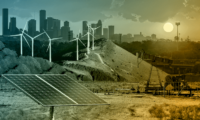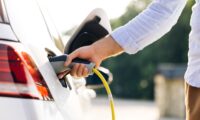Wind Energy: The Pros and Cons of Onshore vs. Offshore Turbines
As the world seeks cleaner and more sustainable energy sources, harnessing the power of wind has emerged as one of the most promising solutions to combat climate change and transition towards a more sustainable future. As the world shifts its focus toward renewable energy sources, wind energy stands tall as a frontrunner, offering a clean, abundant, and environmentally friendly alternative to conventional fossil fuels.
At the heart of wind energy generation lie two distinct approaches: onshore and offshore wind turbines. Both methods have revolutionized the renewable energy landscape, but they come with their unique sets of advantages and challenges.
From expansive wind farms dotting the picturesque countryside to colossal structures towering over the sea, the visual impact of these renewable giants often sparks discussions and debates about their suitability, efficiency, and overall impact on the environment and local communities.
For example, the Iowa Farm Bureau Federation is calling for statewide regulations that guide where large-scale wind and solar farms can be built, as members raise concerns about the loss of valuable farmland to renewable energy projects given the rapid growth of wind and solar energy projects in the state (source).
Furthermore, three commercial-scale projects for offshore wind turbines have been approved in the Gulf of Mexico, where the next boom in offshore wind power is expected. There is a vested interest from environmental advocates, fishermen, and other energy companies in what happens in the development of turbines. Shrimpers asked the government to avoid blocking their most productive fishing areas, which officials essentially did. Meanwhile, commercial and recreational fishermen see a benefit to building turbines in the Gulf because they expect red snapper and other fish to be attracted to the turbine foundations, as they are with oil rigs (source).
Whether you’re an advocate for renewable energy, unsure about the overall impact, or simply curious, let’s delve into the technological nuances, environmental implications, economic considerations and benefits of wind energy and examine the pros and cons of onshore turbines vs. offshore turbines, along with the collaboration between the two sources.
What is Wind Energy?
Wind energy is generated using wind turbines, and two prominent types are onshore and offshore wind turbines. Both have unique advantages and disadvantages, sparking debates on the better option. Onshore wind turbines are located on land, typically in rural or open areas with substantial wind resources. They have been the primary face of wind energy, contributing significantly to global renewable energy capacity.
Offshore wind turbines are situated in bodies of water, usually in coastal areas or offshore regions. As technology advances, offshore wind energy has gained traction, offering unique challenges and benefits of wind energy. Although offshore wind energy has gained traction in other parts of the world: the United Kingdom as the global leader and China rapidly emerging as a major player, wind energy is still building momentum in the United States.
Onshore Wind Turbines
Onshore wind turbines capture energy from the wind and produce electricity using long, rotating blades that drive a generator located at the top of the tower behind the blades. Onshore wind energy is among the fastest-growing utility-scale renewable energy technologies in the United States.
Pros:
Lower Installation Costs: Onshore wind farms typically have lower upfront costs than offshore projects since they are easier and less expensive to install on land.
Shorter Construction Timelines: Onshore wind projects often have shorter development and construction timelines, allowing quicker deployment of renewable energy capacity.
Less Challenging Grid Connection: Onshore wind farms are usually closer to existing power grids, reducing the complexity and costs of connecting them to the electricity infrastructure.
Easier Maintenance and Accessibility: Onshore turbines are more accessible for maintenance and repair, which can reduce downtime and maintenance expenses.
Cons:
Visual and Noise Impact: Some people consider the presence of onshore wind turbines in landscapes to be visually intrusive, and they can generate low-frequency noise that may cause concerns for nearby residents.
Land Use Conflicts: Wind farms require significant land areas, which can lead to conflicts with other land uses like agriculture or conservation.
Wind Variability: Onshore wind energy is subject to variations in wind patterns, which can lead to intermittent power generation, requiring backup power sources or energy storage systems.
Limited Wind Resources in Some Regions: Not all locations have optimal wind resources for efficient electricity generation, limiting the geographical availability of onshore wind energy potential.
Offshore Wind Turbines
Offshore wind farms harness the powerful and consistent winds of the open seas to generate electricity on a large scale.
Pros:
Higher Wind Speeds: Offshore wind turbines tend to experience higher and more consistent wind speeds, leading to increased electricity generation and capacity factors.
Reduced Visual Impact: These offshore turbines are less visible from the shore, minimizing potential objections on aesthetic grounds.
Greater Energy Potential: Offshore wind farms have access to vast untapped wind resources, especially in coastal areas, presenting significant potential for large-scale energy production.
Enhanced Technology Development: Offshore wind projects drive advancements in technology and engineering solutions, benefiting the entire wind energy sector and creating jobs.
Cons:
Higher Installation and Maintenance Costs: Offshore wind farms generally require more substantial investments due to complex installation processes, including underwater foundation construction and specialized vessels for maintenance.
Longer Development Timelines: Regulatory approvals and environmental assessments can prolong the development timeline of offshore wind projects.
Environmental Concerns: Offshore wind farms can impact marine ecosystems, bird migration patterns, and marine mammals if not planned and managed correctly.
Grid Connection Challenges: Connecting offshore wind farms to onshore grids can present logistical and technical challenges, potentially increasing transmission costs.
The Synergy between Onshore and Offshore Wind Turbines
Onshore and offshore wind turbines complement each other in several ways, making them powerful components of a comprehensive and balanced wind energy strategy. By leveraging their respective strengths and addressing their limitations, the benefits of both onshore and offshore wind energy contribute to a more reliable, efficient, and sustainable renewable energy system.
Here are some ways Onshore and Offshore Wind Turbines complement each other:
Diversification of Wind Resources: A more diverse and comprehensive wind resource portfolio can be developed by deploying a mix of onshore and offshore wind farms, reducing the overall variability of wind power generation.
Stability in Electricity Generation: The intermittent nature of wind power can lead to fluctuations in electricity generation. Onshore and offshore wind farms, with their different wind patterns, can balance out each other’s output. When the wind is stronger and more consistent offshore, it can compensate for periods of lower onshore wind and vice versa. This helps to maintain a more stable and reliable electricity supply from wind energy sources.
Reducing Grid Congestion: By having wind farms onshore and offshore, power transmission to the grid can be optimized. Offshore wind farms can be situated closer to densely populated areas, with higher electricity demand, reducing the need for long-distance transmission lines and minimizing grid congestion.
Land Use Optimization: Onshore wind farms require significant land areas, and finding suitable locations near populated areas can sometimes be challenging due to land use conflicts. Offshore wind farms, located far from residential areas, can utilize open water spaces to generate large amounts of electricity without impacting terrestrial land use.
Technological Advancements: The development of offshore wind projects drives advancements in wind turbine technology, foundation design, and engineering solutions that can also benefit onshore wind projects. Lessons learned from offshore projects can be applied to improve the efficiency, reliability, and cost-effectiveness of onshore wind turbines.
Load Balancing and Integration: Combining onshore and offshore wind energy in a well-designed energy system allows for better load balancing. When one source experiences fluctuations in output due to varying wind conditions, the other source can step in to maintain a more constant supply, supporting the overall integration of wind energy into the grid.
Climate Resilience: By diversifying the locations of wind farms, the risk associated with extreme weather events and climate impacts can be spread out. If one region experiences adverse weather conditions, wind generation from another region likely remains unaffected, enhancing the resilience of the overall wind energy system.
Both onshore and offshore wind turbines play vital roles in the global transition towards renewable energy sources, and together they can be quite a force. By capitalizing on their strengths and compensating for their weaknesses, a well-balanced combination of onshore and offshore wind power can contribute significantly to a greener energy future while providing a more stable and consistent supply of renewable electricity.
There are many benefits of wind energy that will undoubtedly contribute significantly to a sustainable energy future, fostering a cleaner and greener planet for generations to come.
Resources:
What our customers are saying
See why our power customers say we're the best electricity provider in Texas!
I was worried about getting electricity for my home through a prepaid company. I was calling around to see different rates then going through all the hassle of credit checks while dropping points each…
I have been with this company for several years and have been very happy since. Even when I moved, they made my usually stressful situation very easy and carefree. I recommend them to everyone that I…
I have enjoyed the service for 2 years now. In the beginning this service was planned to be temporary but with the service being so effective for me i decided to keep it for the long haul. I’m a happy customer.








